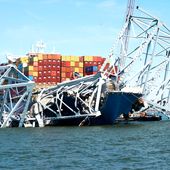OPINION:
Over the past two decades, policymakers across federal and state governments have initiated policy regimens focused on economy-wide decarbonization with a heavy emphasis on aggressive electrification. The early stages of this decarbonization policy framework have largely coincided with a period of flat power demand growth, the shale revolution, and a rapid reduction in renewable generation costs.
Grid operators and power suppliers took advantage of these tailwinds by replacing coal-fired generation assets with more efficient, low-emission natural gas generation, while also rapidly deploying wind and solar resources. This resulted in a 32% decline in power sector emissions between 2005 and 2020, largely facilitated within competitive wholesale electricity markets.
While power sector demand reached a 30-year low during the pandemic, what followed was a post-pandemic economic recovery that has shifted the power sector into a new paradigm.
The Biden administration has continued to expand its aspirational decarbonization policy framework through the Inflation Reduction Act (IRA), the Bipartisan Infrastructure Law (BIL), the Chips and Science Act (CHIPS), and more stringent regulations like EPA greenhouse gas emissions standards for power plants. In addition to decarbonization, the administration sought to revitalize domestic manufacturing through next-generation industries, including clean energy and chip manufacturing. Grid operators are already seeing a glimpse of how this will affect the operational realities of maintaining a reliable and affordable power system in the years and decades ahead. But too many policymakers are ignoring numerous warnings of the looming reliability crisis.
First, the IRA subsidies are distorting energy markets by driving incentives toward weather-dependent renewable generation and nascent technologies — like hydrogen and carbon capture and storage (CCS) — that have not reached a sufficient scale to provide customers with reliable and affordable energy. While these resources are already or will soon be important assets to the grid operations, policymakers have largely ignored the impacts on the existing dispatchable resources imperative to reliability. Compounding the issue are the proposed EPA regulations that will require some fossil-fired generation to either blend hydrogen or use CCS to comply with GHG emissions thresholds. The real-world impact of this regulation is an acceleration in premature retirements of the dispatchable gas-fired generation essential to maintaining reliability.
The North American Electric Reliability Corporation (NERC) has warned before of a looming reliability crisis in successive assessments. Now for the first time, though, it’s identifying government policy as a factor contributing to the challenges we now face. PJM Interconnection projects that between 24 GW to 58 GW of its thermal resources 12% to 30% of total installed capacity is at risk of retiring by 2030 without a clear replacement for that generation; of that, 25 GW is attributed to “policy-driven retirements.”
Second, BIL and CHIPS are seeking to revitalize American manufacturing by reshoring production of clean energy equipment and computer chips needed for new data centers, which will support new, power-hungry innovations like artificial intelligence (AI). The result of these post-pandemic economic recovery policies is a return to power demand growth in nearly every region of the country.
The scale of the demand increase is enormous. The Federal Energy Regulatory Commission (FERC) projects peak electric demand could grow by 38 GW over the next five years. And while renewables were expected to fill this gap, project developers are facing significant headwinds in building new generation due to archaic permitting requirements that balloon costs, cater to extreme community opposition, and force years-long wait times to interconnect to the grid. Projects that once took a few years to permit and build are now taking closer to a decade.
Policymakers throughout the U.S. have fostered this ever-growing gap between aspirational policies and the operational realities of the energy system, thus pushing reliability to the brink. The stakes of these decisions are immensely high. As these challenges continue to compound, American families will pay more for energy and the economy will suffer when reliability fails and the lights go out especially during increasingly frequent extreme weather events.
Advocates aggressively pursuing transportation, building, and industrial electrification, as well as innovators rapidly bringing new technologies like AI to market, must recognize reliability and affordability as the cornerstones of successful energy policy to achieve their aspirations. If customers experience a prolonged disruption to the energy they depend upon, the backlash toward the economy-wide decarbonization framework could become a generational catastrophe.
Federal and state policymakers must alter the course of our energy policies to ensure customers have the reliable and affordable energy they depend on to live and run their businesses. The scale of the challenge is much broader than an “energy transition.” We must mobilize every tool available to deliver a reliable energy expansion, from updating the process that incentivizes investment, permits, and approves projects, to accepting the essential services conventional resources like natural gas provide to a reliable energy system.
We have entered a new paradigm. If we want the U.S. to lead the next generation of economic progress, policymakers need to view the challenges our energy system is facing with sobriety and seize the opportunity with solutions that meet the reality of the energy system as it exists now not 10, 20, or 30 years into the future.
• Todd Snitchler is the president and CEO of the Electric Power Supply Association, which represents competitive power suppliers providing about 150,000 MW of electric generation from all types of resources. He is a former chairman of both the Public Utilities Commission of Ohio and the Ohio Power Siting Board and was elected twice to represent the 50th House District in Stark County, Ohio.




Please read our comment policy before commenting.